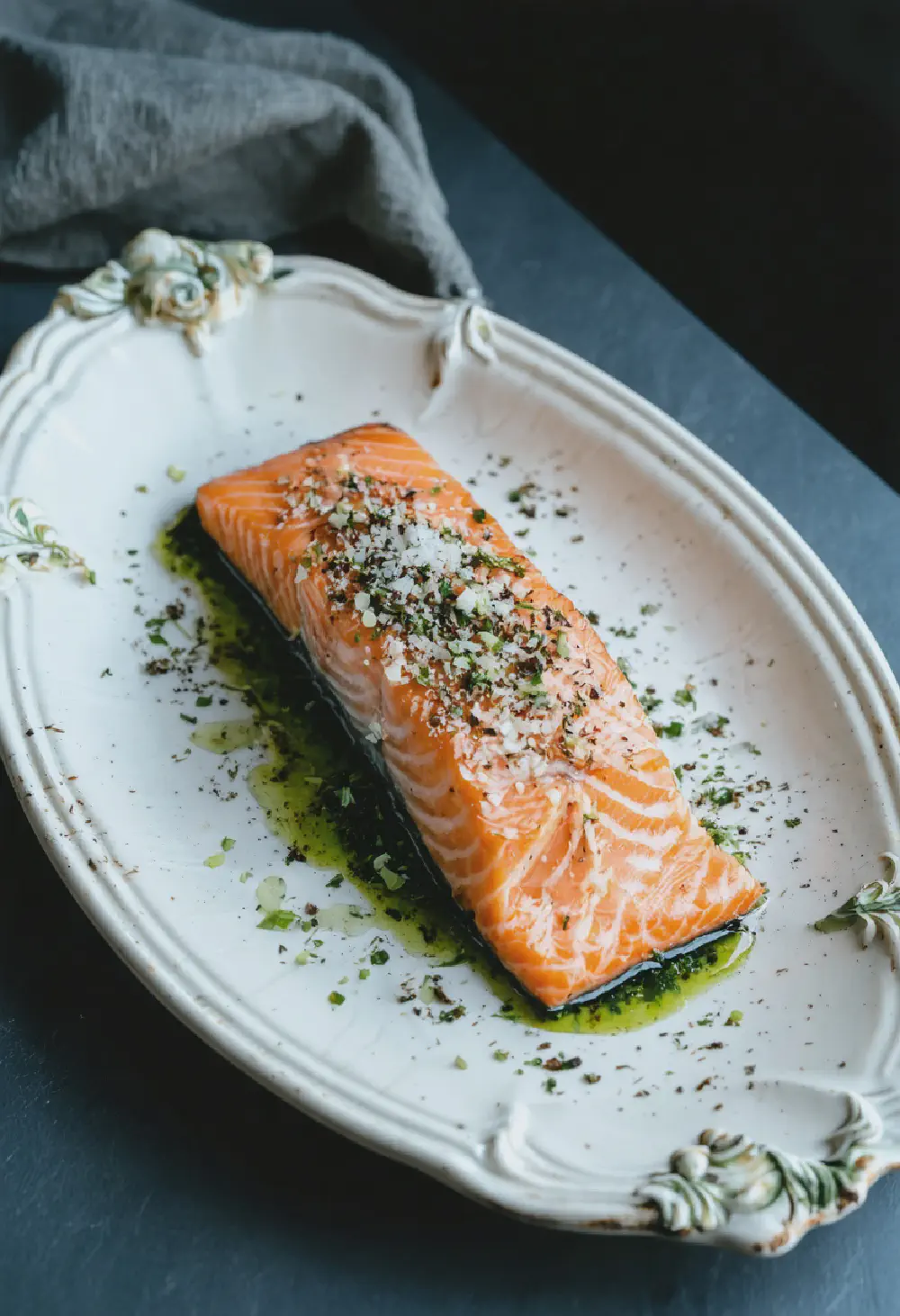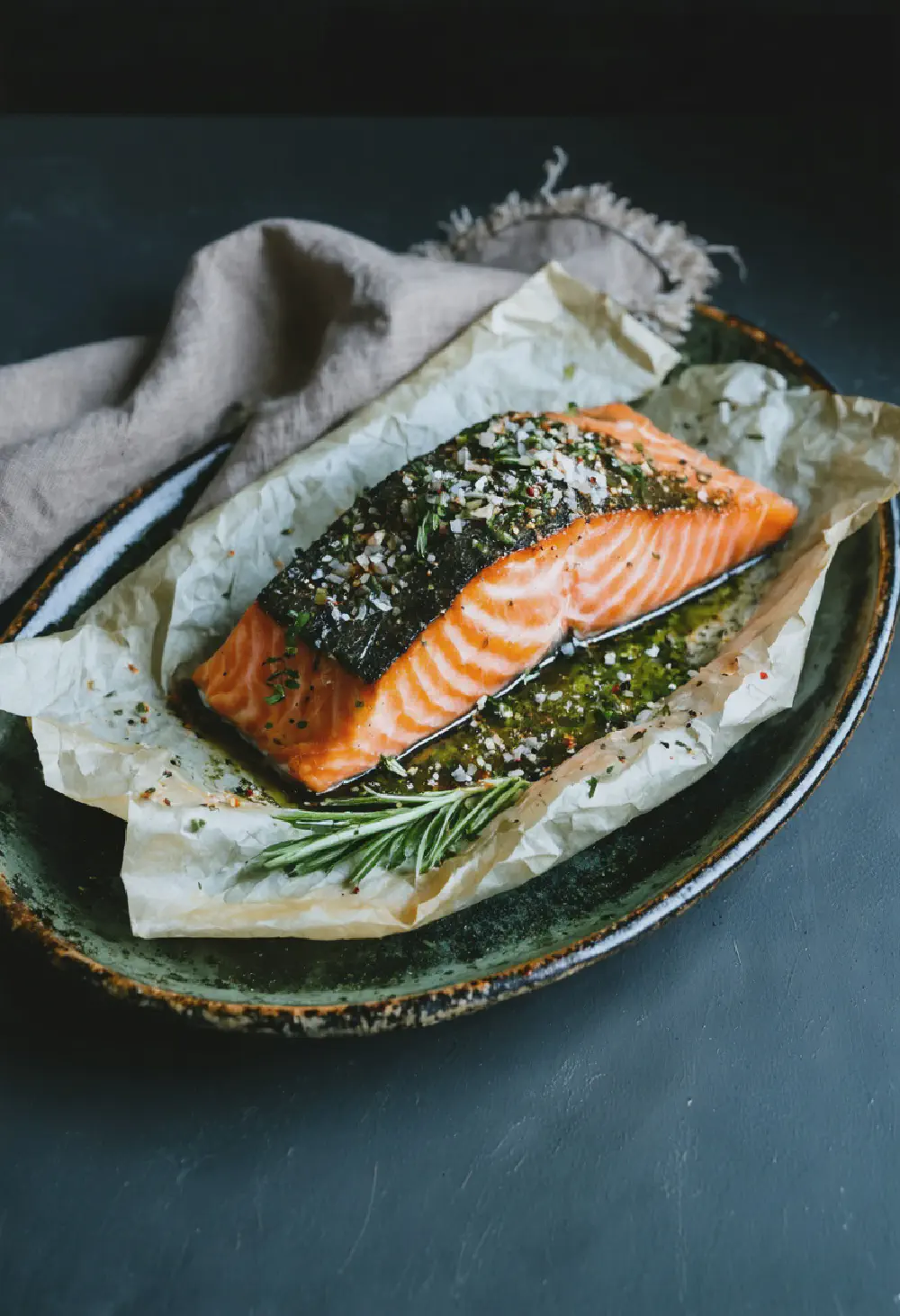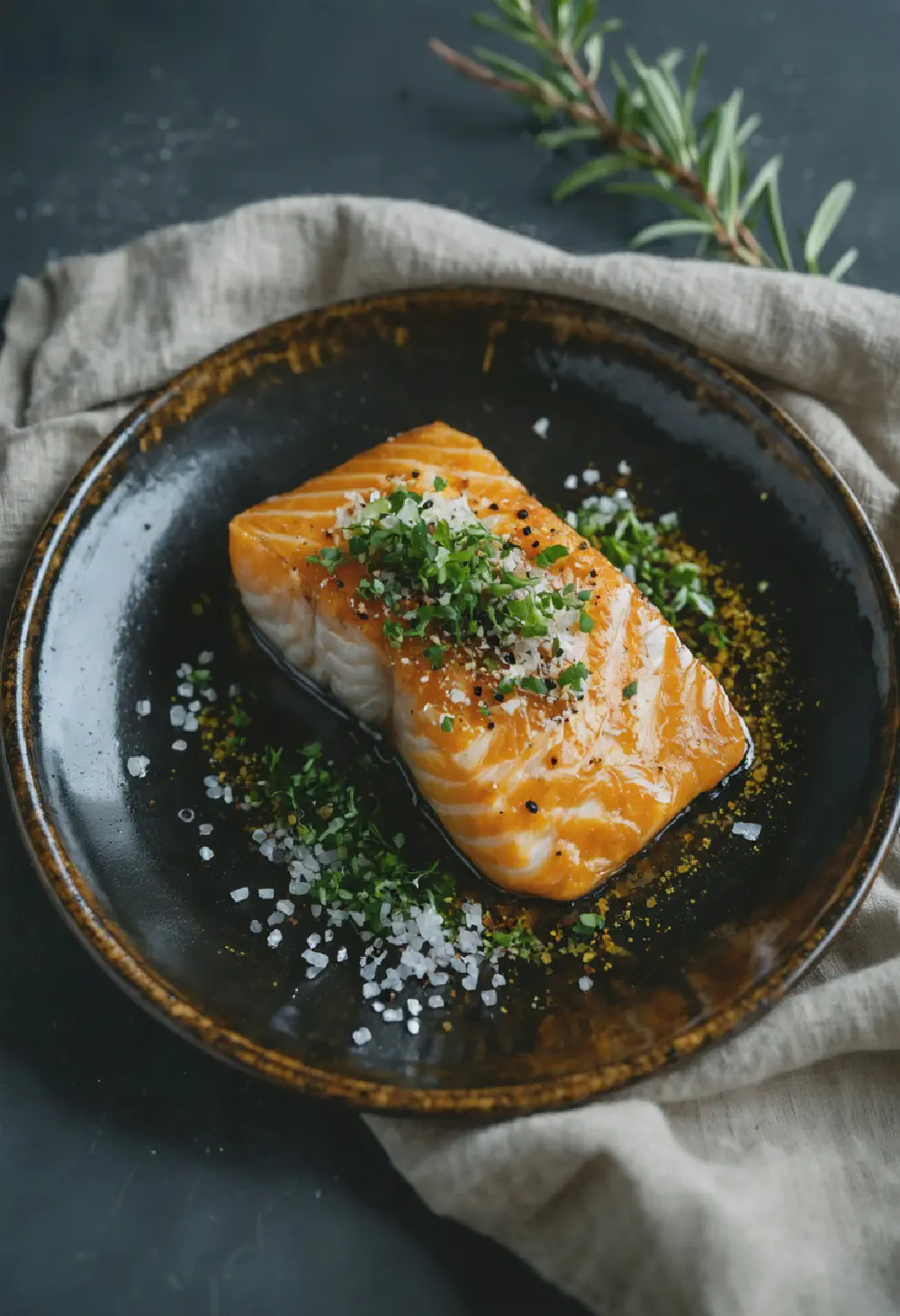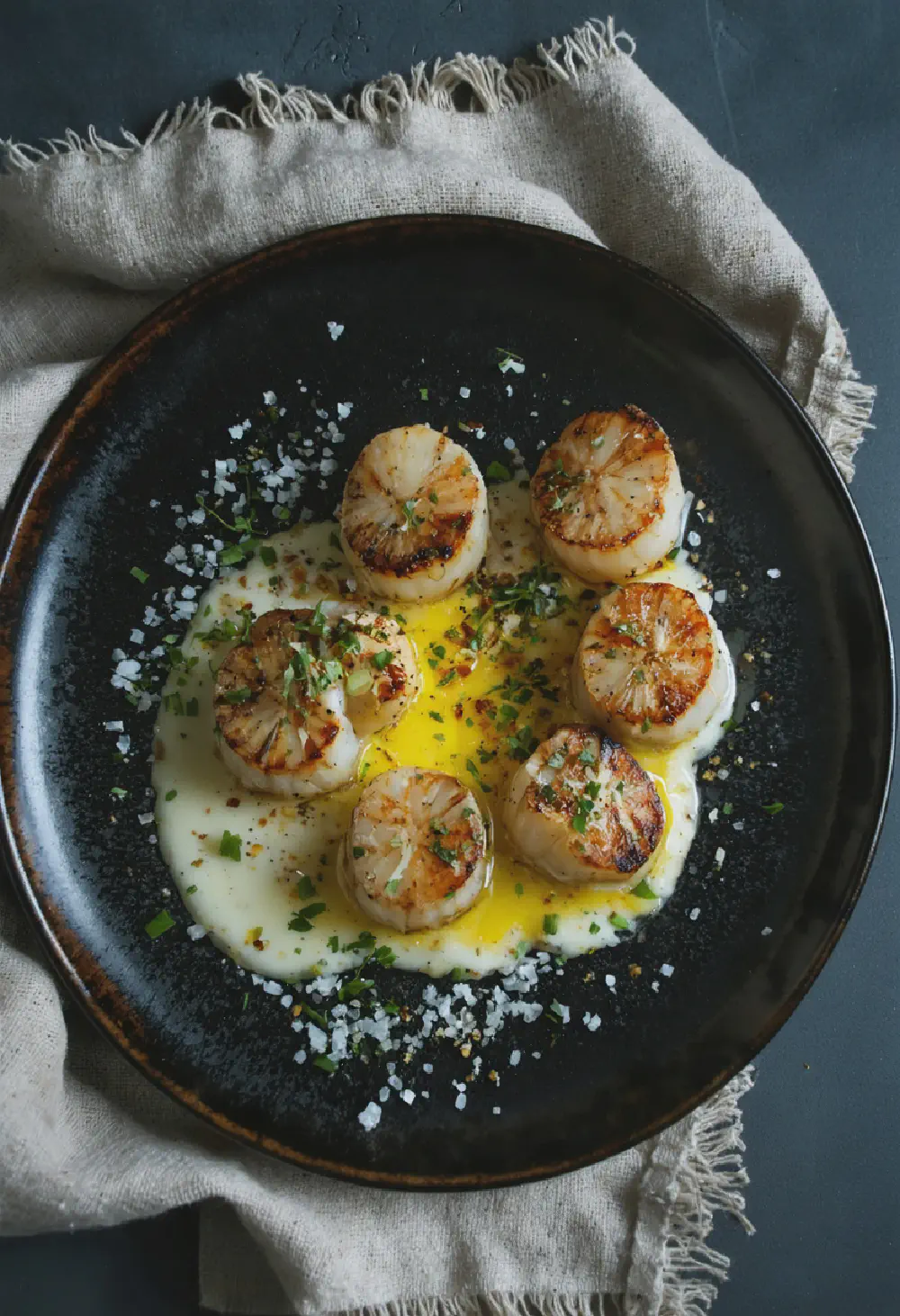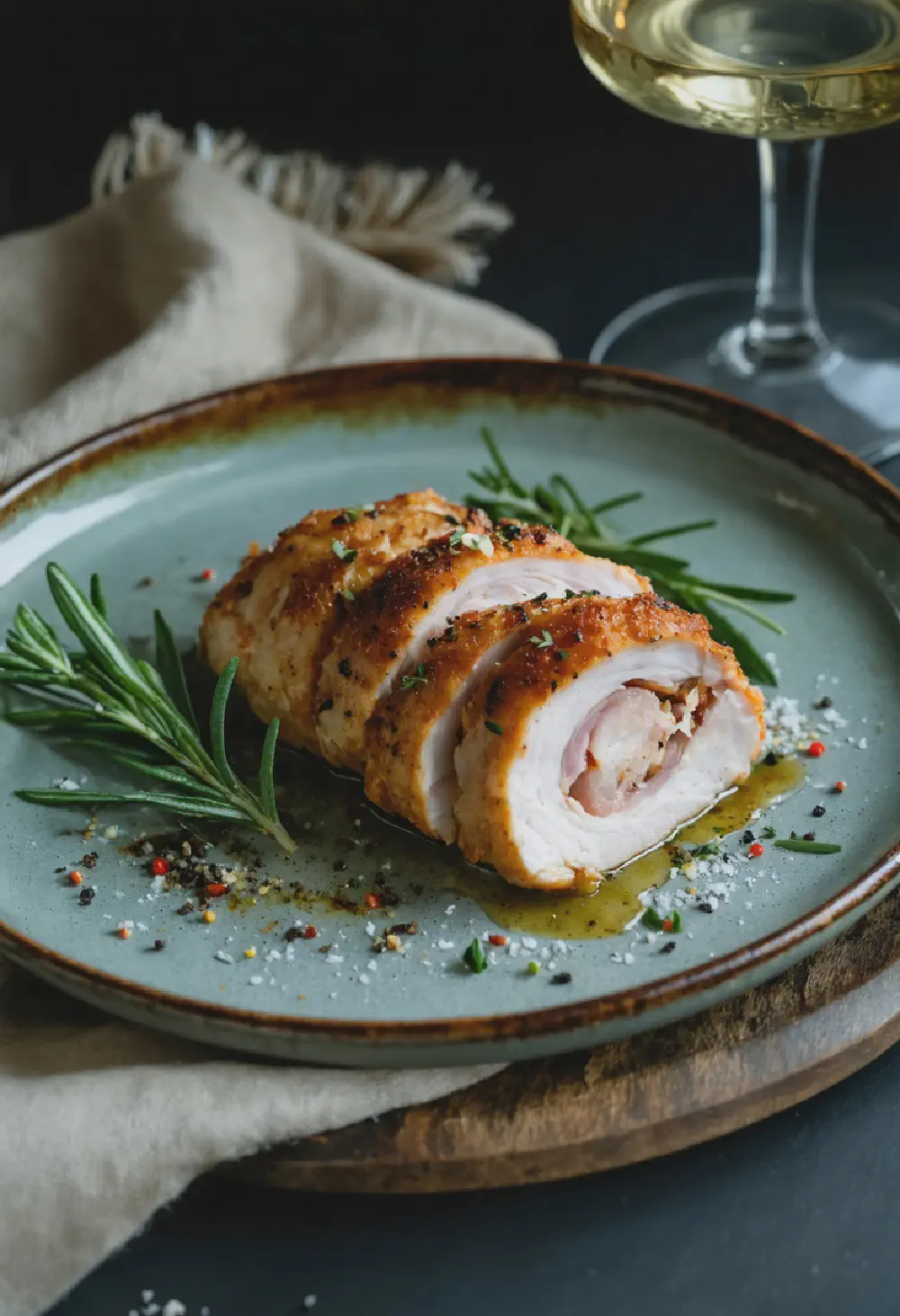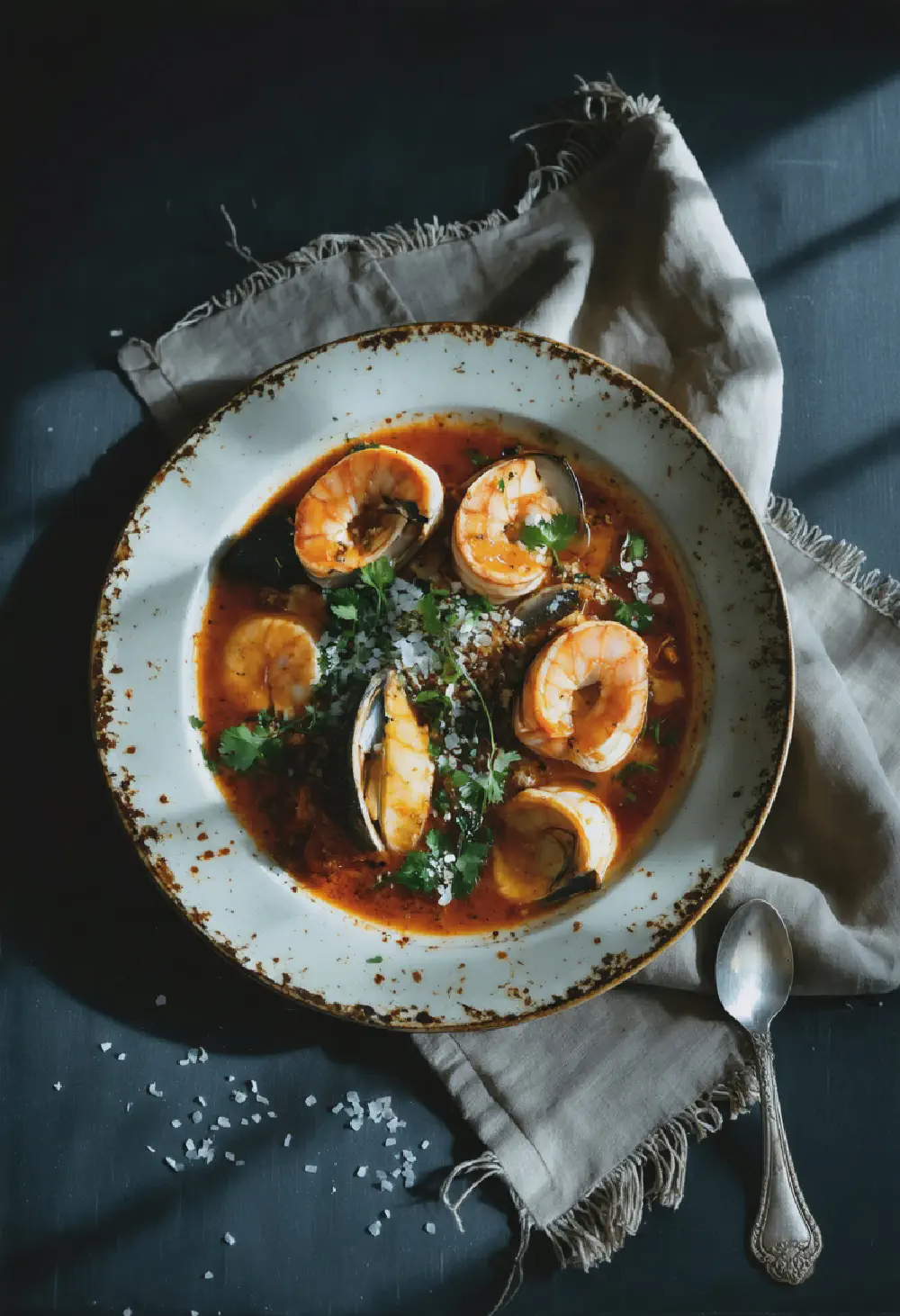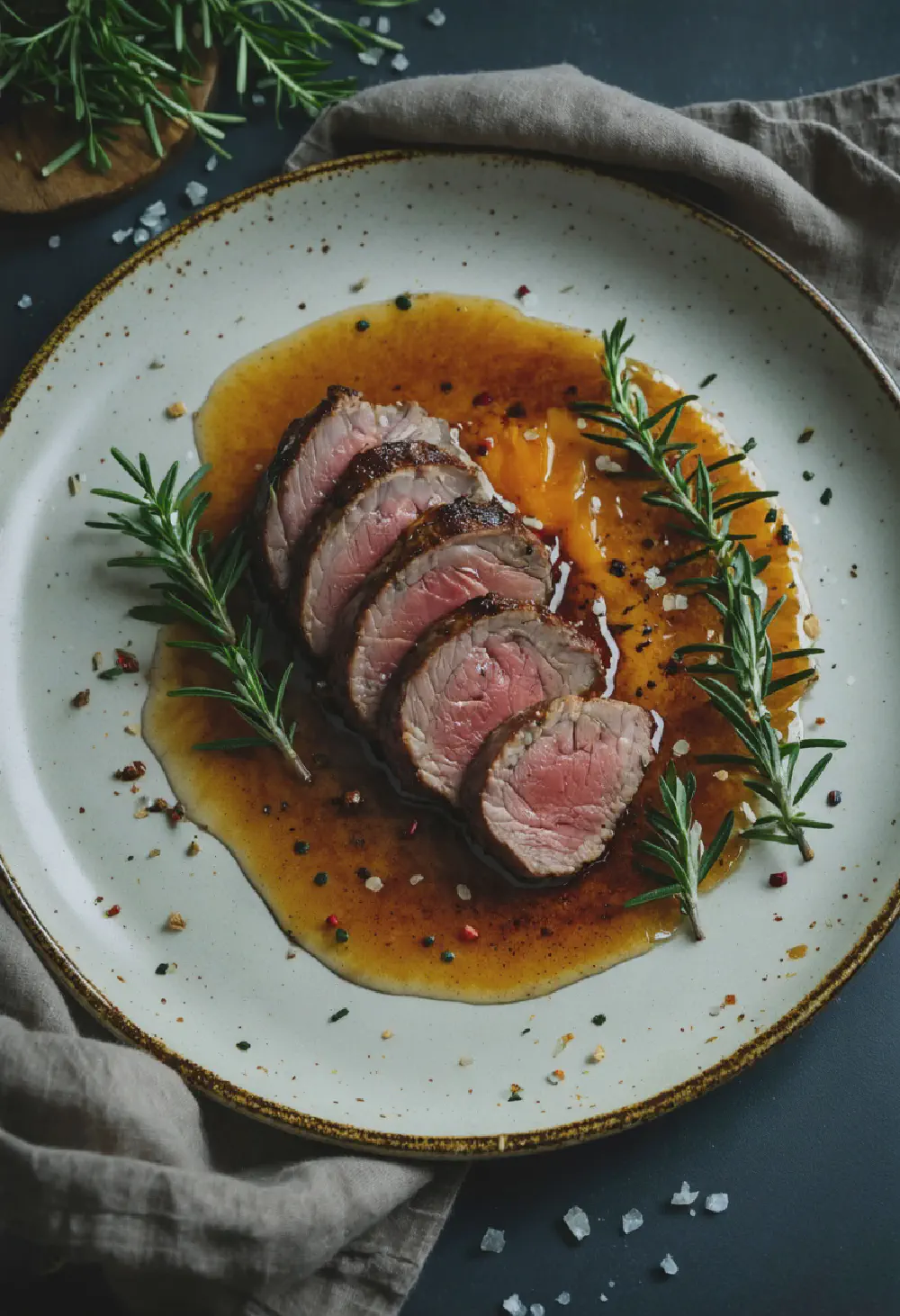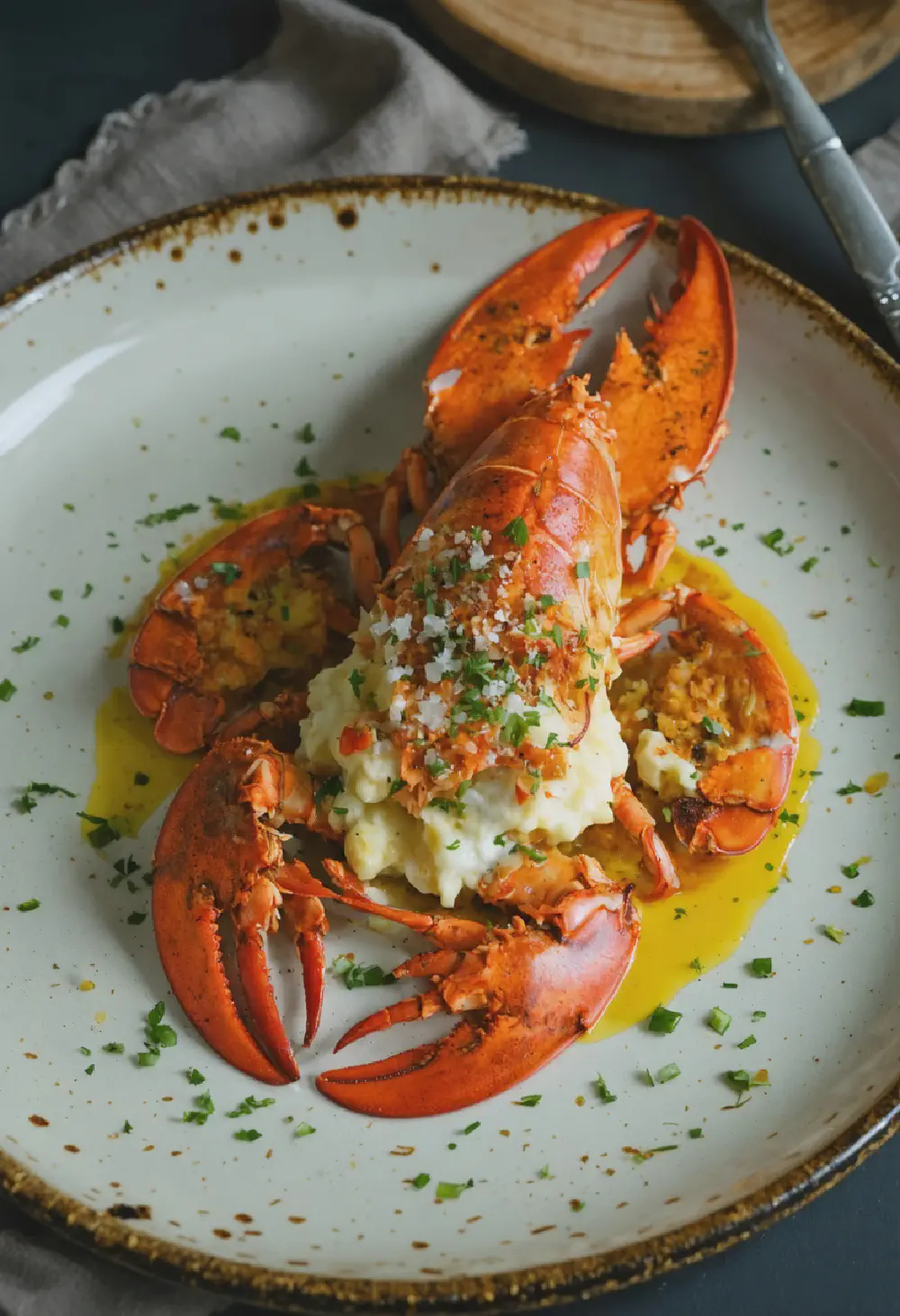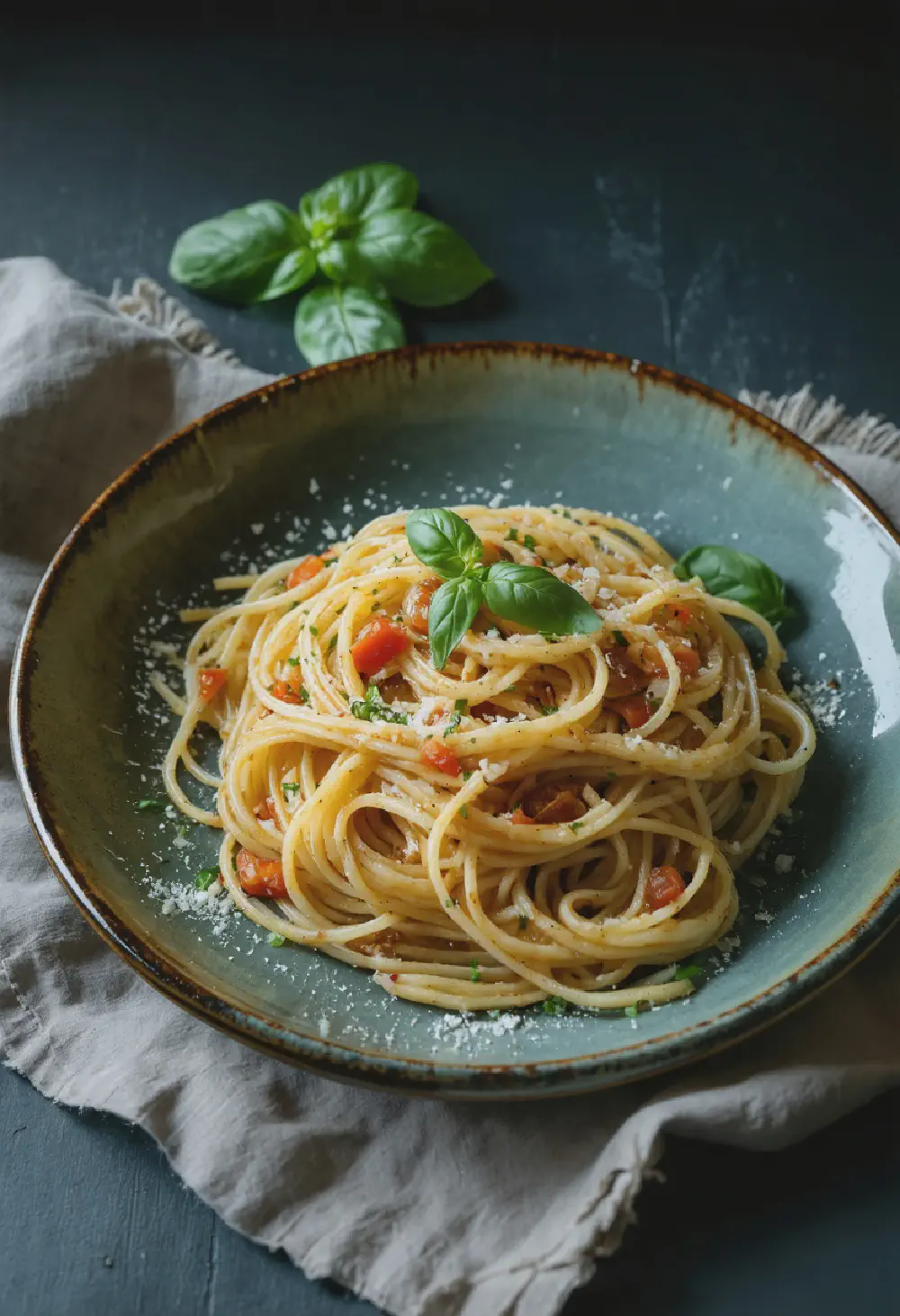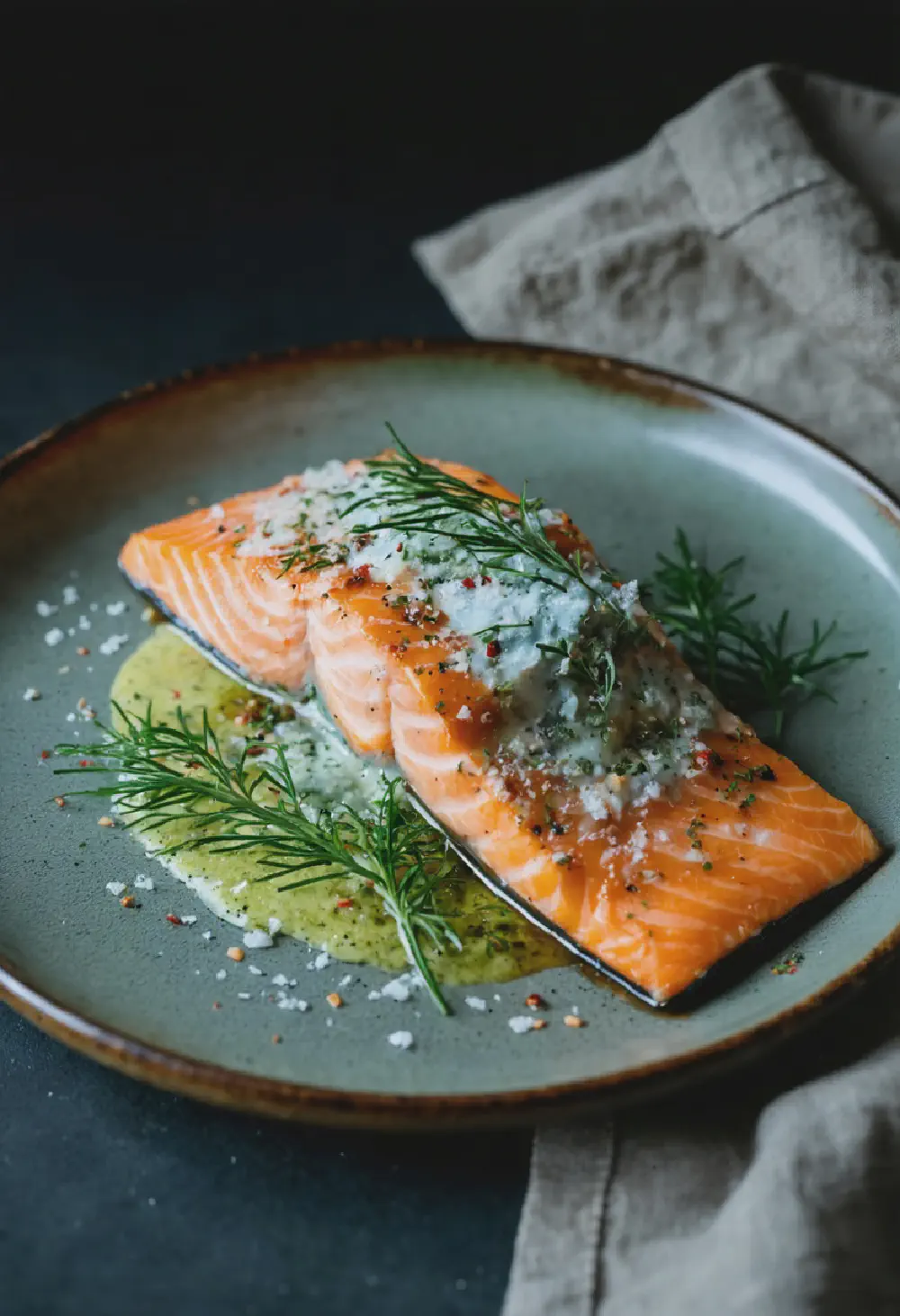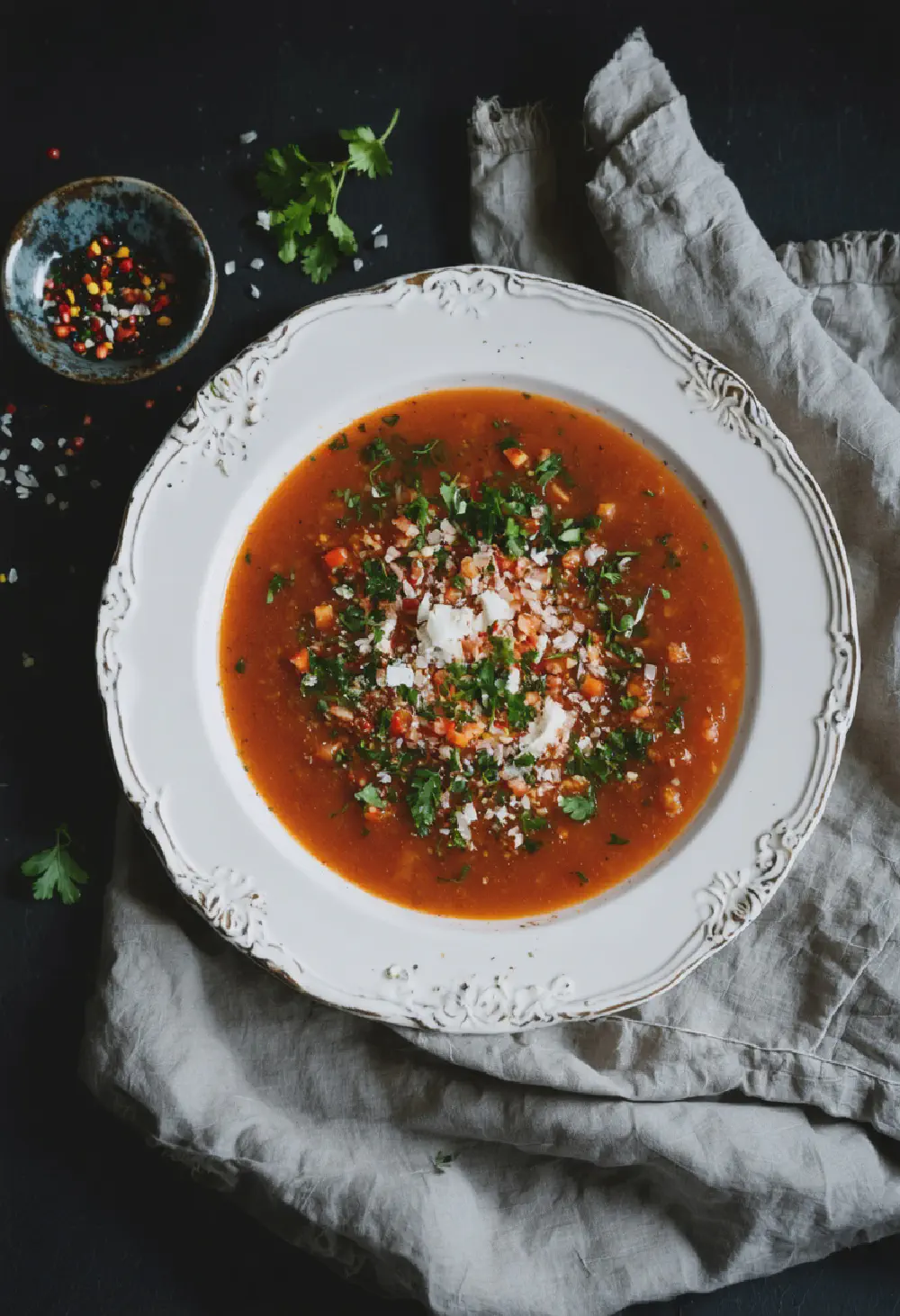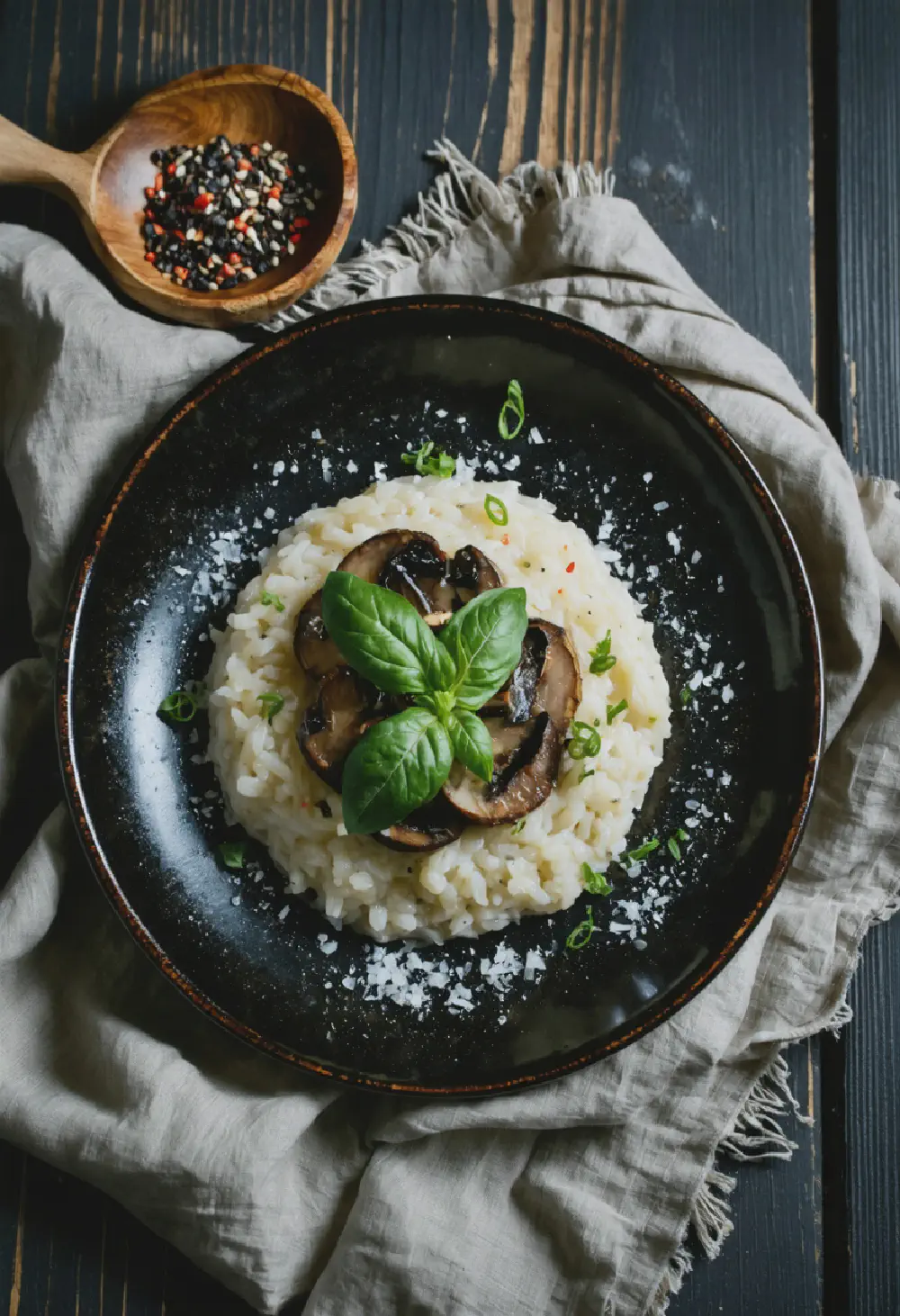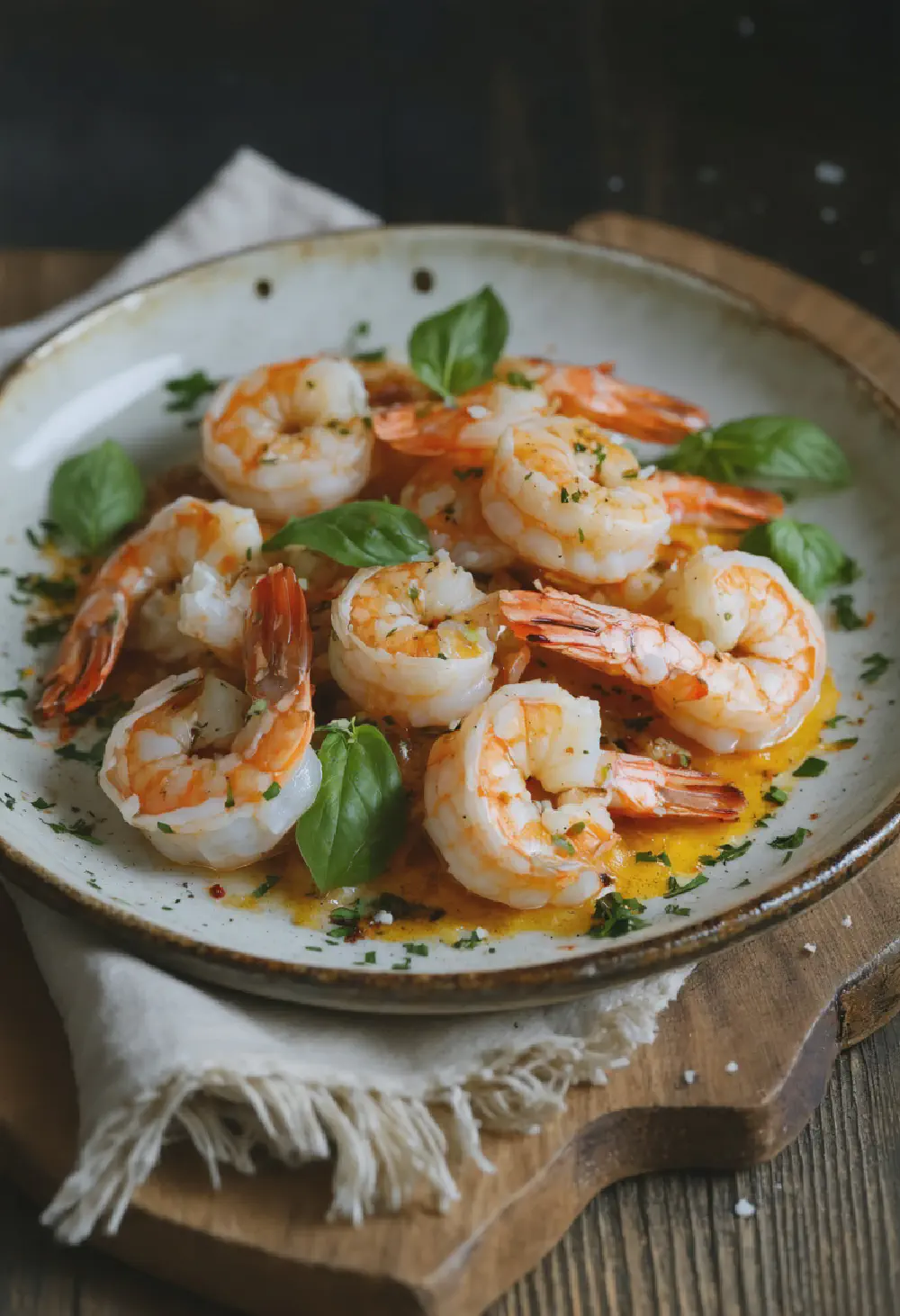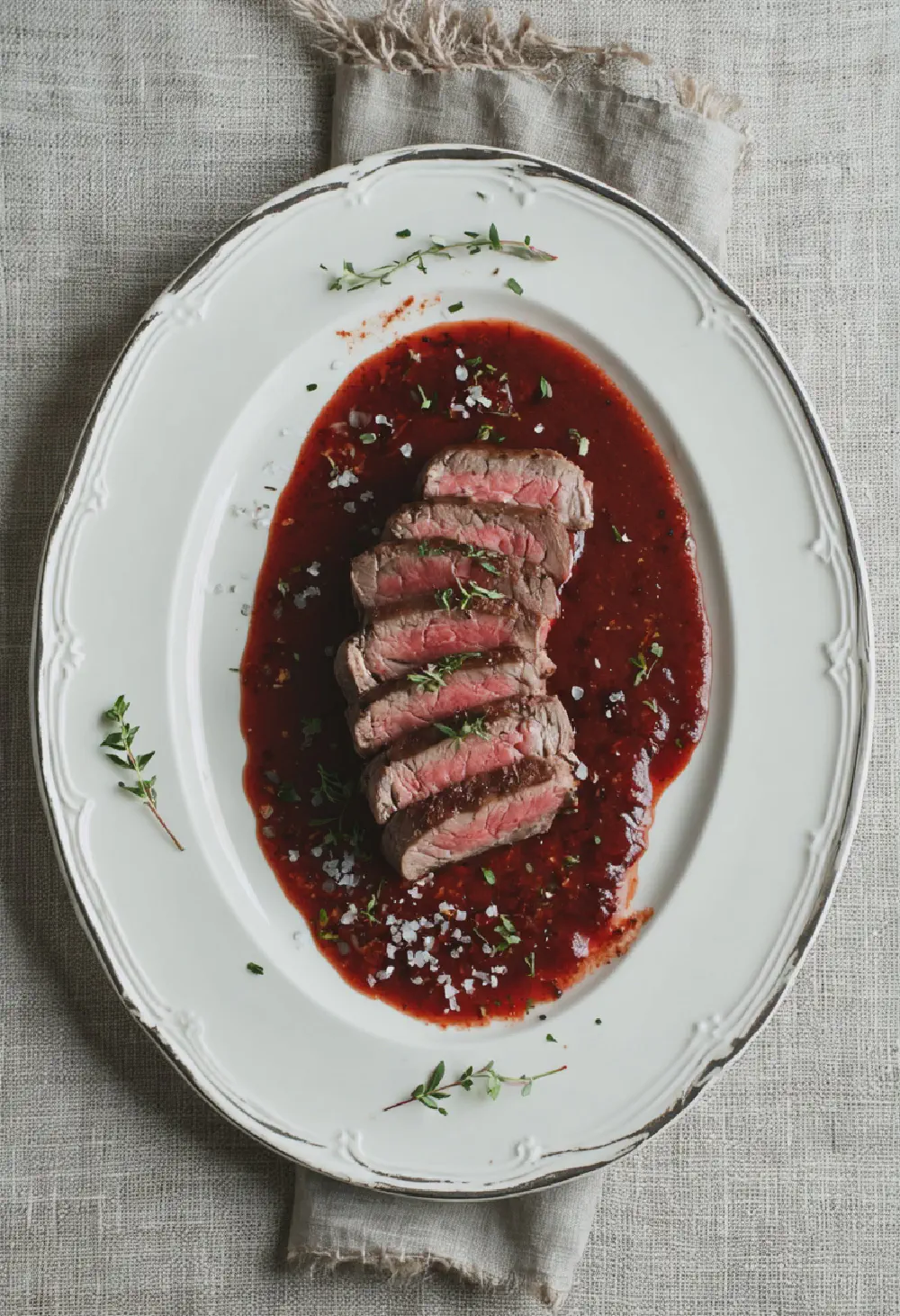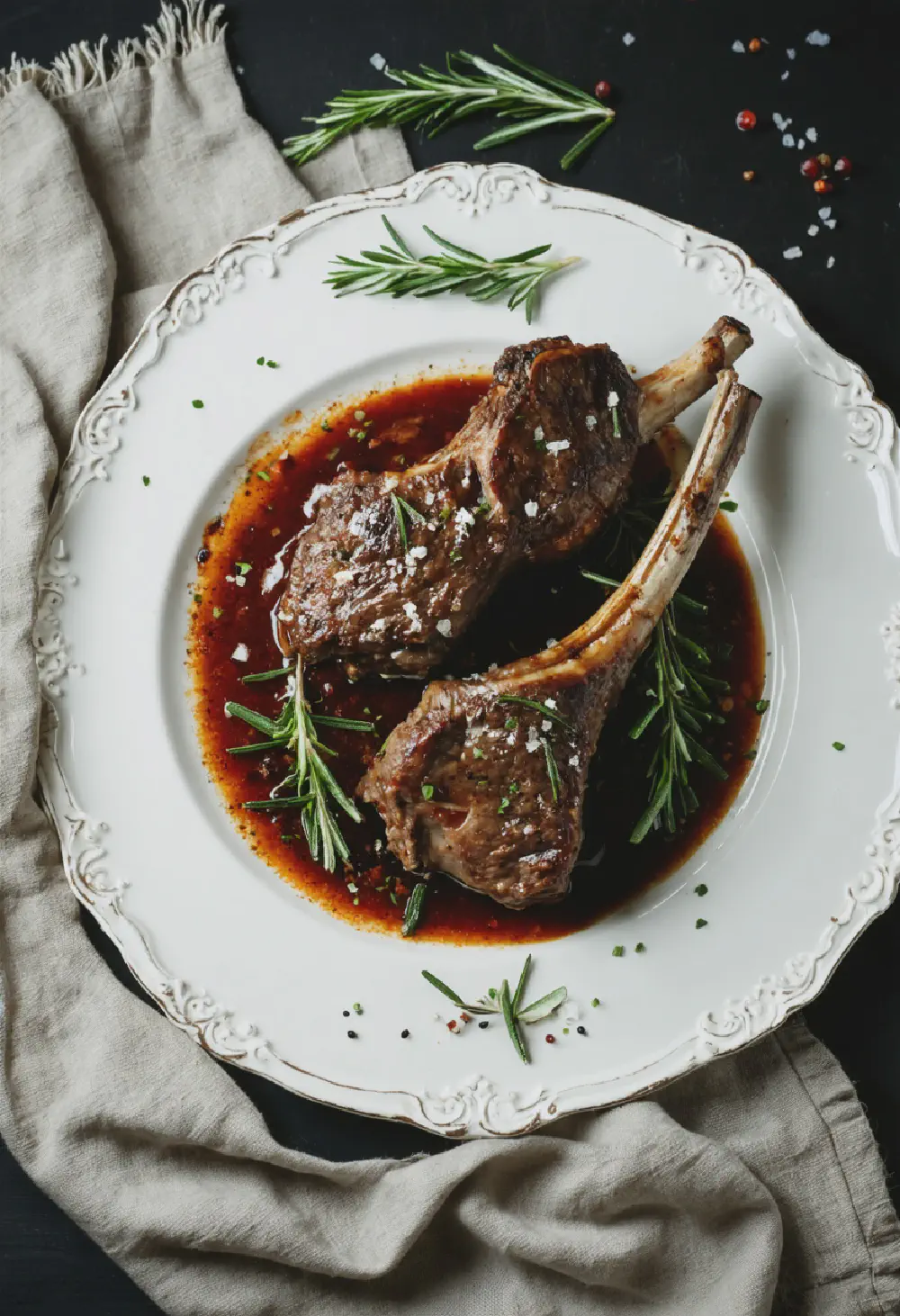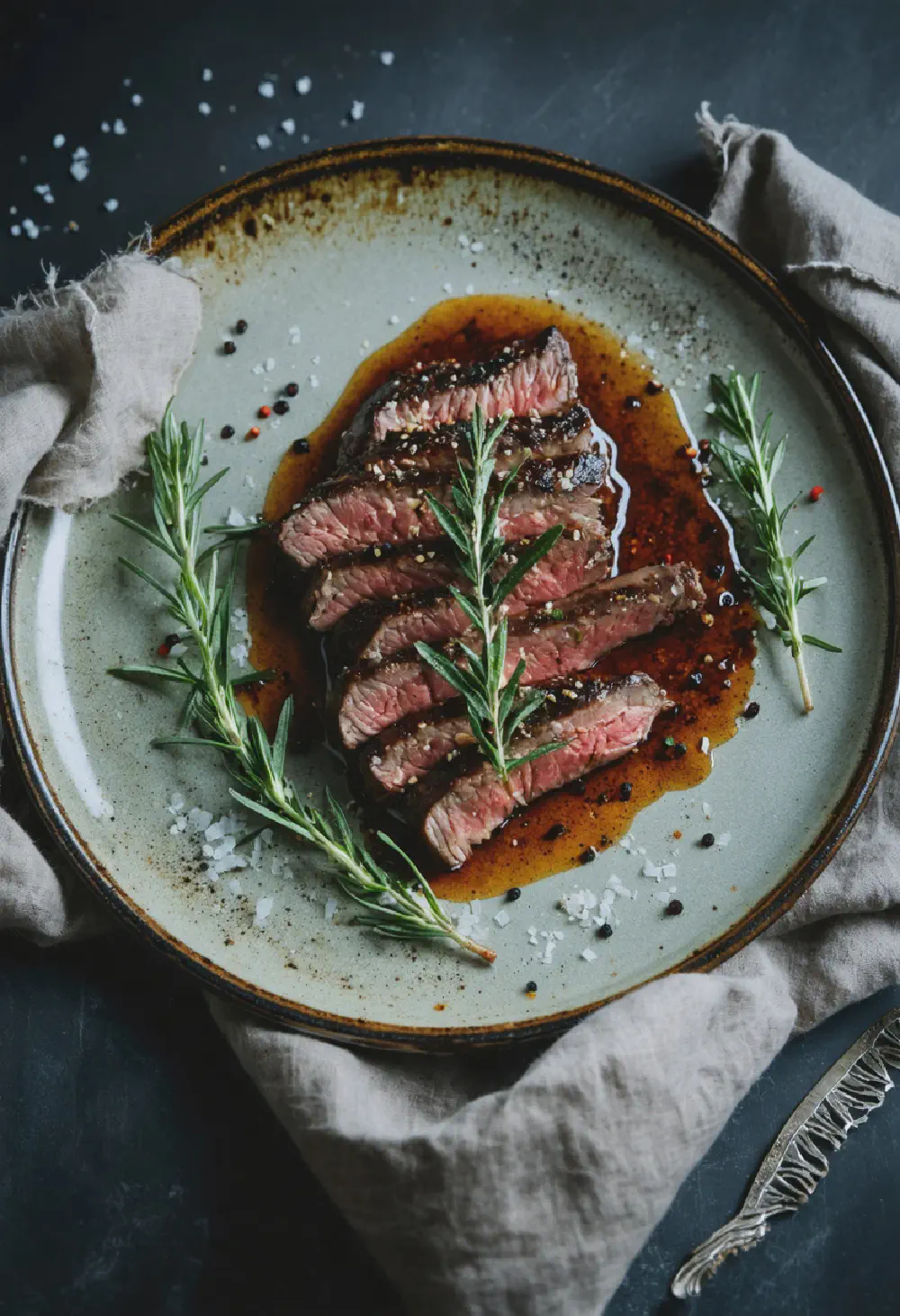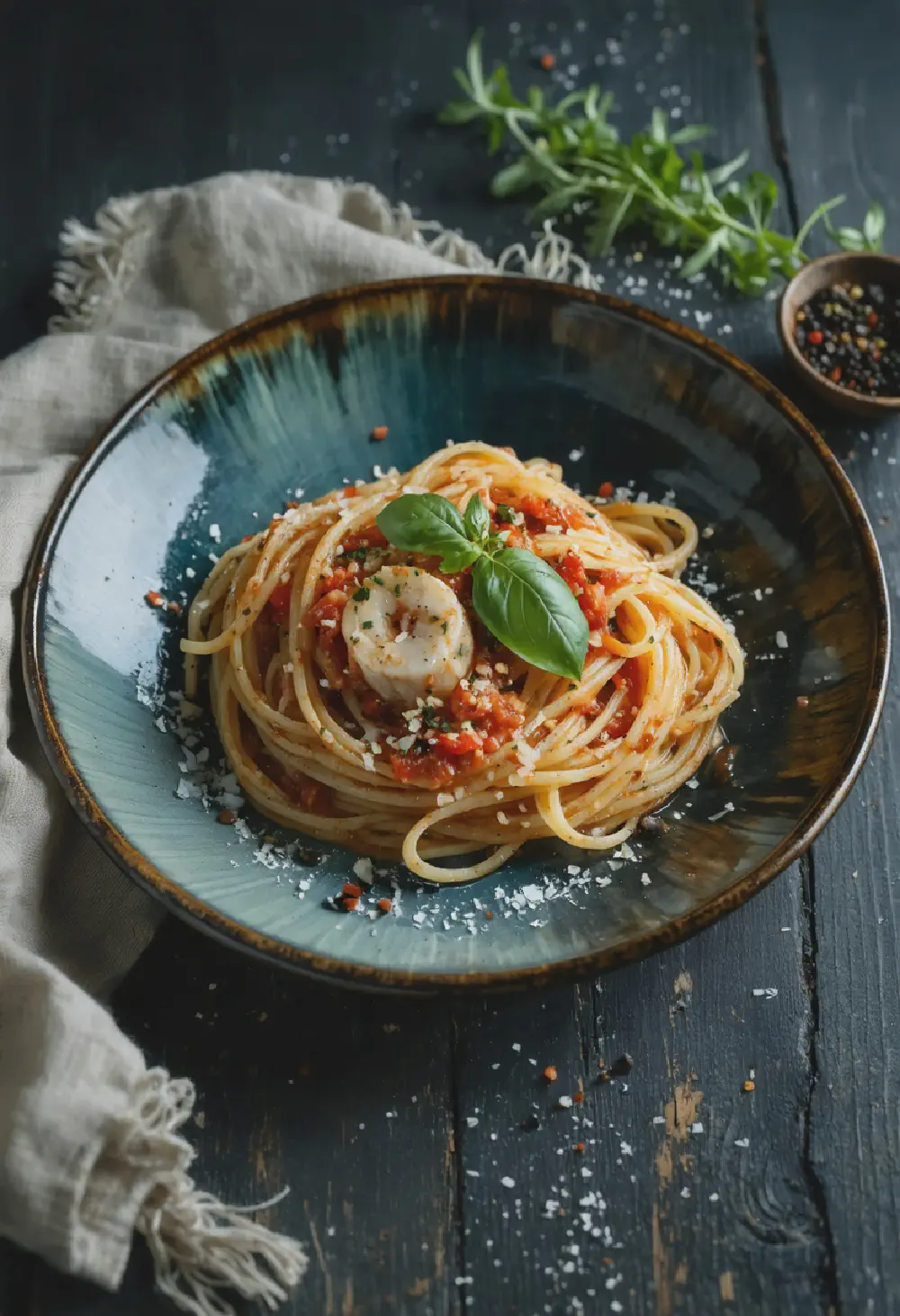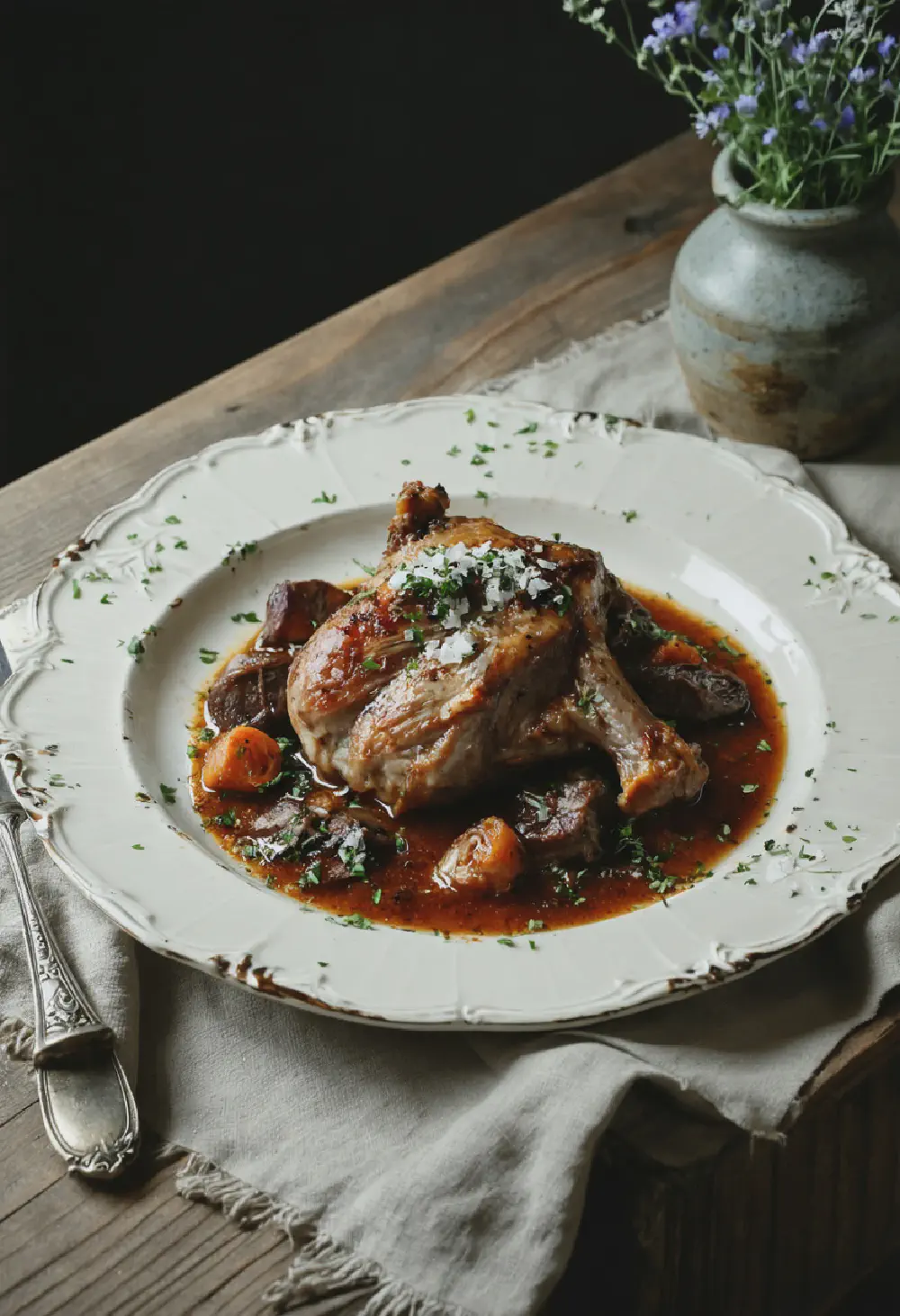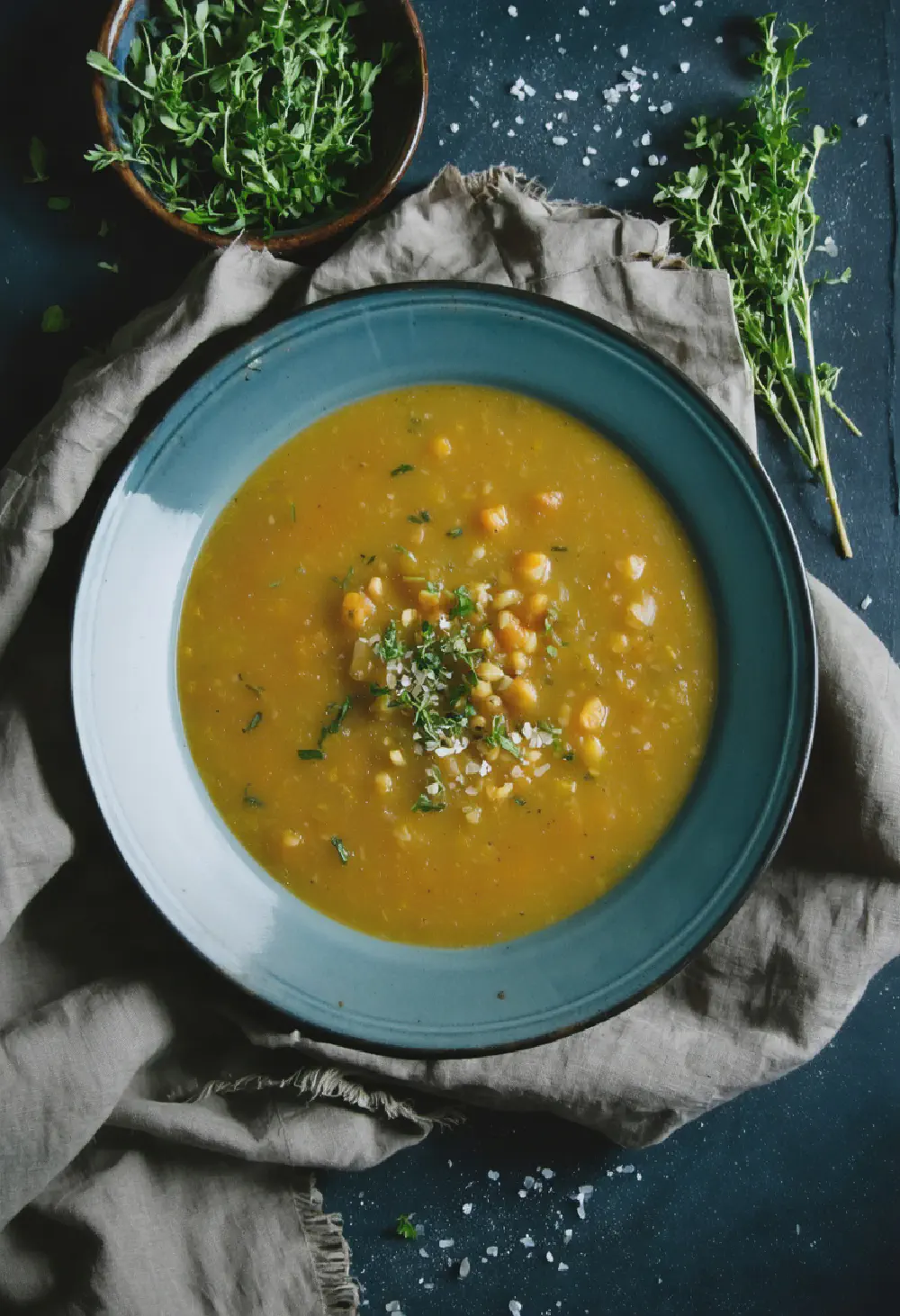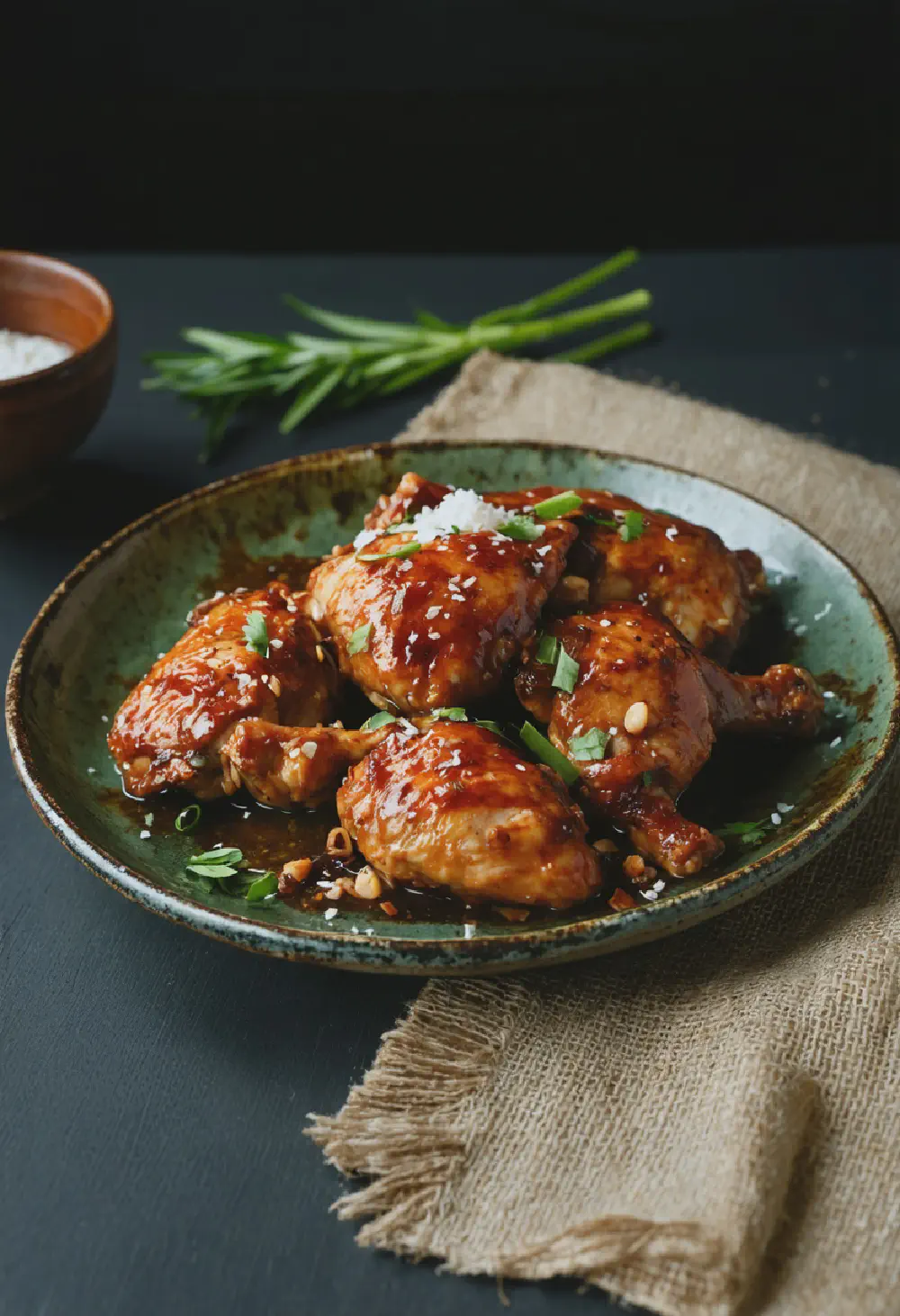Salmon en Papillote
15M
30M
- Makes 4 servings
- 4 salmon fillets (about 6 ounces each)
- 1 lemon, thinly sliced
- 1 zucchini, thinly sliced
- 1 yellow squash, thinly sliced
- 1 small red onion, thinly sliced
- 2 cloves garlic, minced
- 4 sprigs fresh dill
- 4 sprigs fresh thyme
- 2 tablespoons olive oil
- Salt and freshly ground black pepper, to taste
- Preheat your oven to 375°F (190°C).
- Cut four large pieces of parchment paper, each about 15 inches long.
- Place a salmon fillet in the center of each piece of parchment paper.
- Season the salmon with salt and pepper. Drizzle each fillet with olive oil.
- Arrange the lemon slices, zucchini, yellow squash, and red onion slices on top of and around the salmon.
- Sprinkle minced garlic over the vegetables. Place a sprig of dill and thyme on top of each fillet.
- Fold the parchment paper over the salmon and vegetables, sealing the edges by folding and crimping to create a sealed packet.
- Place the packets on a baking sheet and bake in the preheated oven for 15 minutes, or until the salmon is cooked through.
- Carefully open the packets (watch out for the steam) and serve the salmon and vegetables directly from the parchment paper.
Salmon en Papillote: A French Culinary Delight
History
Salmon en Papillote, a cherished dish in French cuisine, has roots that trace back to the art of cooking “en papillote,” which means “in parchment.” This technique, believed to have originated in the 17th century, was initially used to cook fish and vegetables in sealed parchment paper, allowing the ingredients to steam in their own juices. The method not only preserves the delicate flavors of the ingredients but also enhances them, making Salmon en Papillote a timeless classic in French culinary tradition. As an SEO content writer, understanding the historical context of Salmon en Papillote can help in crafting content that resonates with readers interested in the origins of French dishes.
Taste Profile
The taste profile of Salmon en Papillote is a harmonious blend of freshness and subtlety, characteristic of French cuisine. The salmon, being the star of the dish, offers a rich, buttery flavor that is perfectly complemented by the aromatic herbs and vegetables steamed alongside it. Common herbs like dill, lemon, and thyme infuse the fish with a light, citrusy note, while vegetables such as zucchini, carrots, and cherry tomatoes add a sweet and earthy undertone. The result is a dish that is both light and flavorful, making it a favorite for those seeking a healthy yet delicious meal. By focusing on the taste profile, SEO content can attract readers looking for detailed descriptions of what to expect from this French delicacy.
Cultural Significance
In the realm of French cuisine, Salmon en Papillote holds a special place due to its embodiment of the French philosophy of using fresh, high-quality ingredients to create simple yet elegant dishes. This dish reflects the French appreciation for the natural flavors of food, showcasing how minimalistic cooking techniques can elevate the taste of ingredients. It is often served at family gatherings and special occasions, symbolizing the warmth and sophistication of French dining. The cultural significance of Salmon en Papillote makes it a compelling topic for SEO content, as it appeals to readers interested in the cultural aspects of French culinary traditions.
By weaving together the history, taste profile, and cultural significance of Salmon en Papillote, this SEO-optimized content aims to engage readers and enhance the visibility of your recipe blog within the niche of French cuisine.
